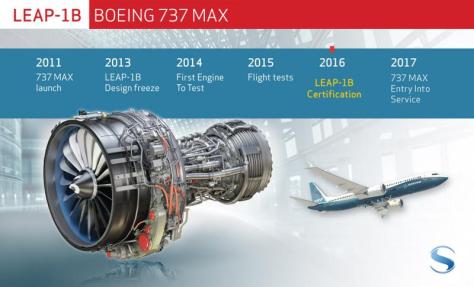With the demand for increasing aircraft efficiencies, certain advancements are needed to be pioneered for the aircraft. Boeing’s answer for the demand of efficiency comes in the form of the iconic 737: the 737 MAX.
The Boeing 737 is one of the most recognizable aircraft. Introduced at 1968, it became one of the go-to narrow body aircraft. With the demand for a more efficient aircraft, Boeing needed a refresh to the successful 737. Given the mentioned demand, the 737 needs a new face. After all, the 737 has been on the skies since 1968.
Boeing will launch the newest designation of the 737 dubbed the ‘Boeing 737 MAX’. The Boeing 737 MAX will come in three variants namely: the 737 MAX 7, 737 MAX 8, and 737 MAX 9. These three variants will replace the 737-700, 737-800, and 737-900ER.

Overall, the 737 MAX will be more efficient compared to the outgoing model. The most distinct difference between the outgoing 737 and the 737 MAX is the introduction of a new winglet design. Boeing claims that the new winglet design is the most efficient winglet placed on any aircraft.
This new design reduces the drag created by vortices at the tip of the wing. Providing a smoother flow at the tips equates to minimizing the drag created by vortices while ensuring lift is being produced all throughout the span of the wings.
The new winglet design also generates lift away from the fuselage. This balances any effect caused by the design of the winglet making the whole wing more efficient.
The new winglet design increases the efficiency of the wing; this alone translates to a decrease in fuel consumption since drag caused by vortices is reduced causing the aircraft to fly smoother.

Aside from the new winglet design, another notable improvement for the 737 is its power plant. The 737 MAX will use the CFM international LEAP 1-B engine which replaces the outgoing CFM56 engine variants that the 737 uses. The new LEAP engine is claimed to consume 14% less fuel compared to the engine it replaces. A decrease in fuel consumption equates to reduction of carbon emissions. A reduce in emissions results in a more environmentally-friendly engine while still producing the required thrust needed during flight.
Aside from being more efficient, the new LEAP engines are also quieter compared to the outgoing one.

From an operational point of view, the 737 MAX is promised to be much more reliable. This ensures that the aircraft spends less time on ground and more time in flight. This essentially makes the aircraft much more efficient for the airlines utilizing it.
The 737 MAX has increased it’s passenger capacity making the aircraft more efficient from an airline operation perspective. More passengers can be moved while still using the same amount of fuel making the aircraft a preferable choice.

The 737 MAX is expected to be formally introduced in 2017 in partnership with Southwest Airlines. Expectations for this aircraft will be high. After all, it carries the 737 name: a name that’s proven and tested. It will have big shoes to fill.
Featured Image Credit: (Boeing.com Photo)

